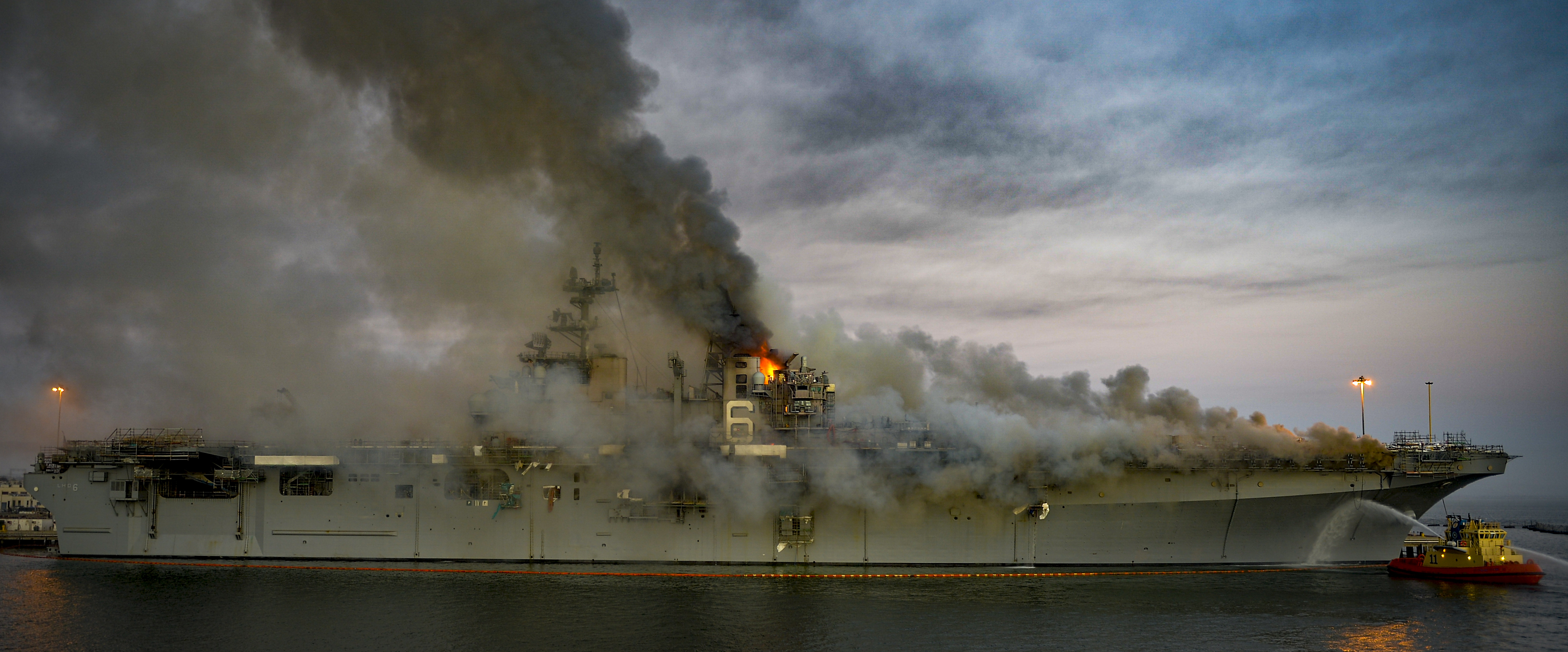
Fires are a constant worry for any ship, and every sailor is taught from their earliest days in the service that damage control is everyone’s responsibility. However, that responsibility becomes more complex when a ship is in maintenance. Fewer sailors are typically aboard, and opportunities are greater to spark a fire from welding or other hot work.
The relationship between where the fire started on USS Bonhomme Richard (LHD-6) on Sunday and where maintenance had been taking place is still murky, Navy officials said – with the fire appearing to have originated in the Marine vehicle stowage area near the back of the amphibious assault ship, but no known maintenance work taking place there. Still, this fire comes on the heels of three incidents in the last two years where ships in maintenance suffered damage from fires.
Rear Adm. Philip Sobeck, the Expeditionary Strike Group 3 commander, acknowledged during a short briefing to reporters at Naval Base San Diego on Monday that the maintenance work happening on the ship had at least two key effects.
First, “because the ship was in the shipyard, lots of scaffolding, lots of debris in the way” that could both hinder the damage control team getting to the fire and could serve as kindling as the flames spread.
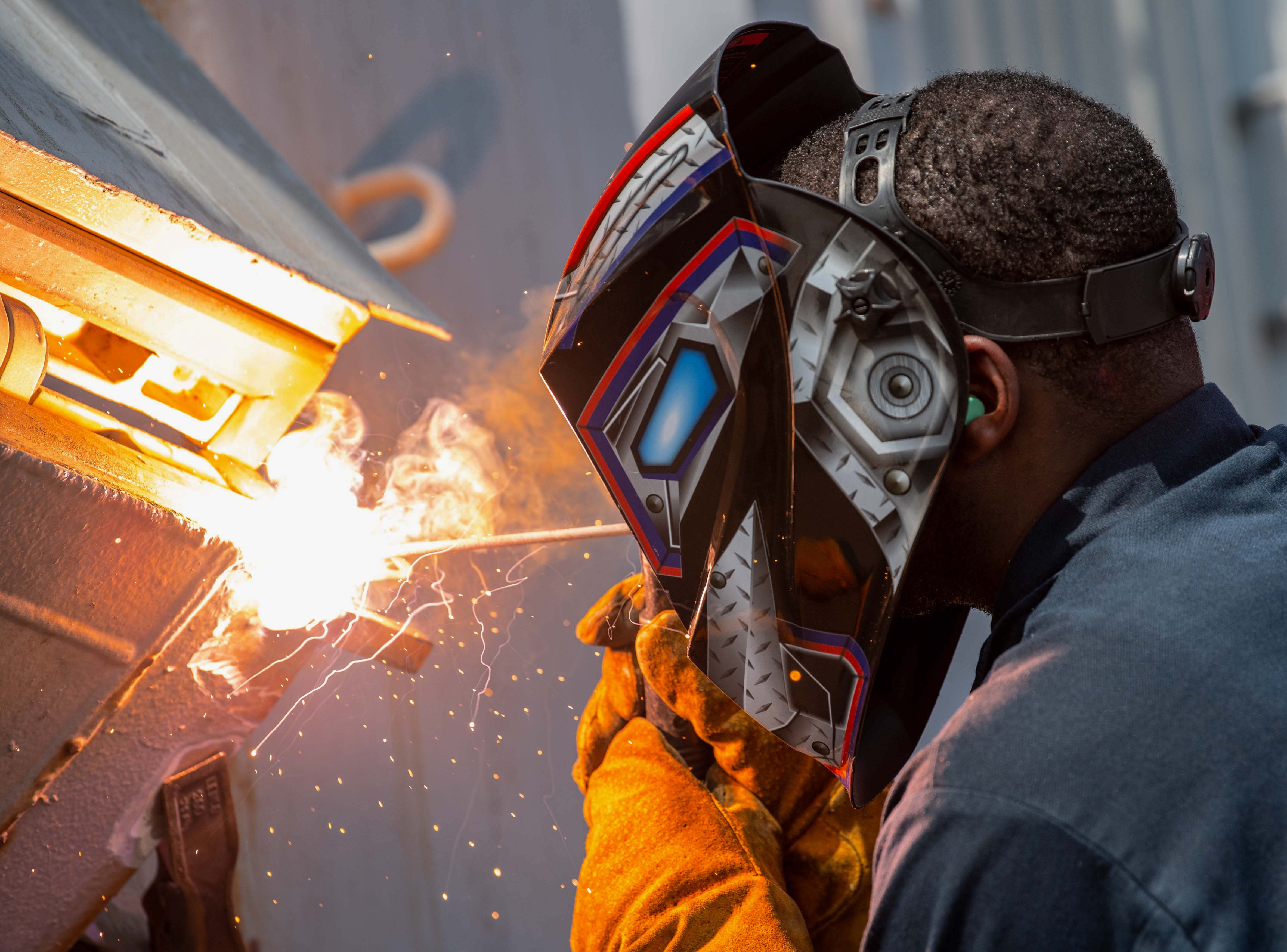
Additionally, he said, the ship’s fire suppression system “was not operational because it was being worked on in the shipyard.” That meant the firefighting got off to a slower start, though the rear admiral said the ship crew’s efforts were augmented by firefighting assets on the pier and in the air. Only about 160 sailors of the ship’s 1,000 crew were aboard Bonhomme Richard when the fire broke out, limiting the number of personnel that could contribute to initial damage control efforts.
The maintenance activities helped the fire spread faster than it would if the ship were operating at sea, for example, but it’s still unclear what role, if any, maintenance activities played in actually igniting the fire.
“I can’t speak to the origination of the fire other than we first got the report in the lower v of the ship, and that’s where basically we store all the tanks and all the other things, the Marine Corps equipment. If you open the stern gate in the back of the ship, in there, that’s kind of where we believe, just above that is where we believe things started,” Sobeck said.
“Because of the amount of shipyard work that’s been done … that was used as a large storage area … supplies and that kind of stuff were all there, and that’s what I think ignited and started the fire.”
Asked if maintenance work was happening in the lower v, he said no.
He made clear that the priority for now was putting out the fire, and that investigating its causes and learning lessons for safer operations in the future would come later.
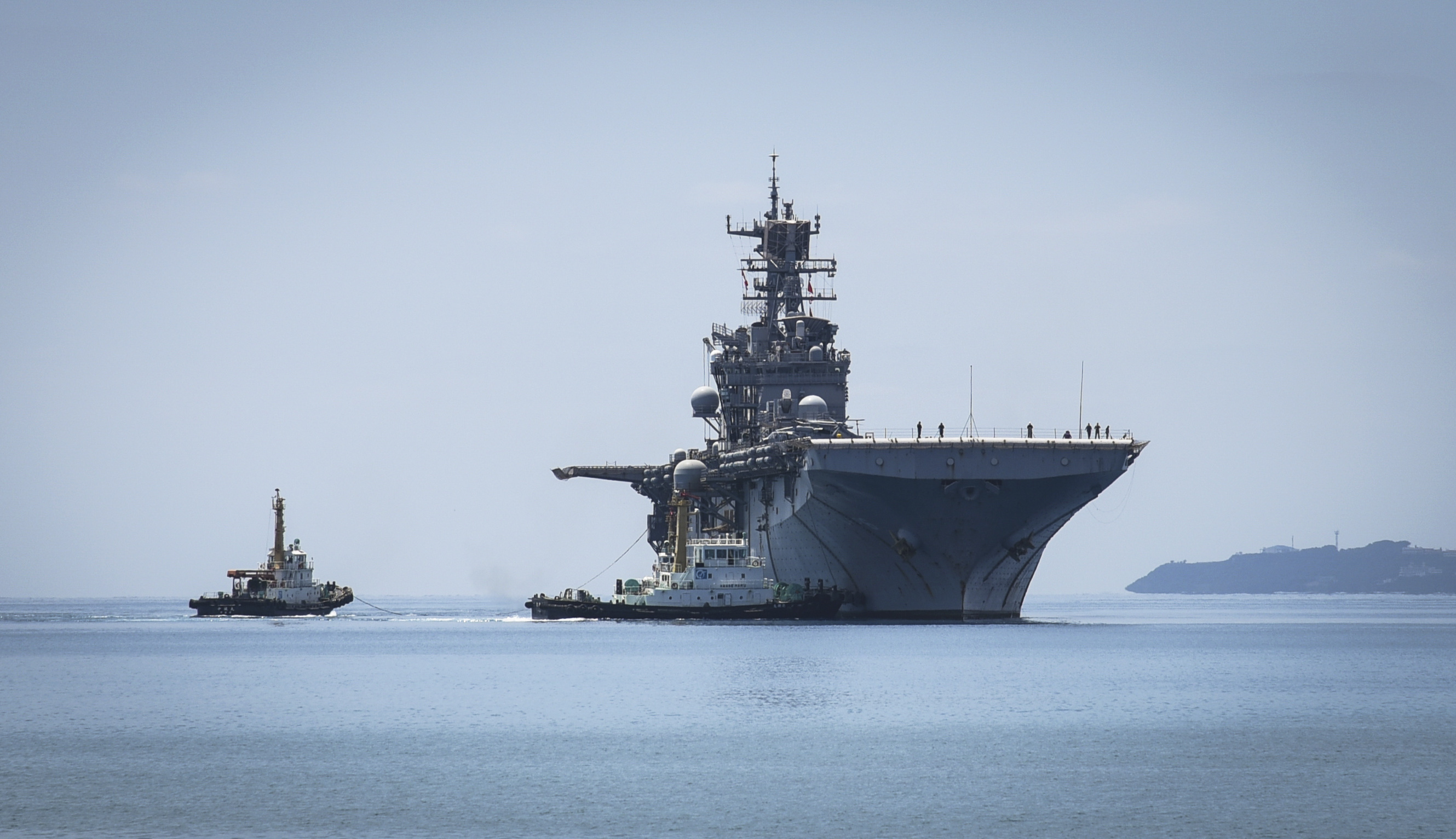
Bonhomme Richard was nearing the end of a docking phased maintenance availability that took place partly at the nearby General Dynamics NASSCO shipyard and partly at the pier at Naval Base San Diego. The Wasp-class amphibious assault ship went into the NASSCO dry dock on June 24, 2019, and undocked on Dec. 19. Since that undocking, work has continued at the naval base.
“LHD 6’s Docking Phased Maintenance Availability includes a combination of maintenance, modernization and repair work. Major maintenance work items include strength and integrity repairs of the main propulsion spaces and preservation and repairs of valves, various tanks and machinery spaces. In terms of modernization, the availability included all of the aviation work items needed to integrate Joint Strike Fighter capability onboard LHD 6 along with upgrades to the radars, combat system and command, control, communications, computers and intelligence (C4I) networks,” Naval Sea Systems Command spokesman Rory O’Connor told USNI News today.
The following are other known fires that have occurred in the last decade while ships were pier-side for maintenance:
Nov. 14, 2019 – USS Iwo Jima
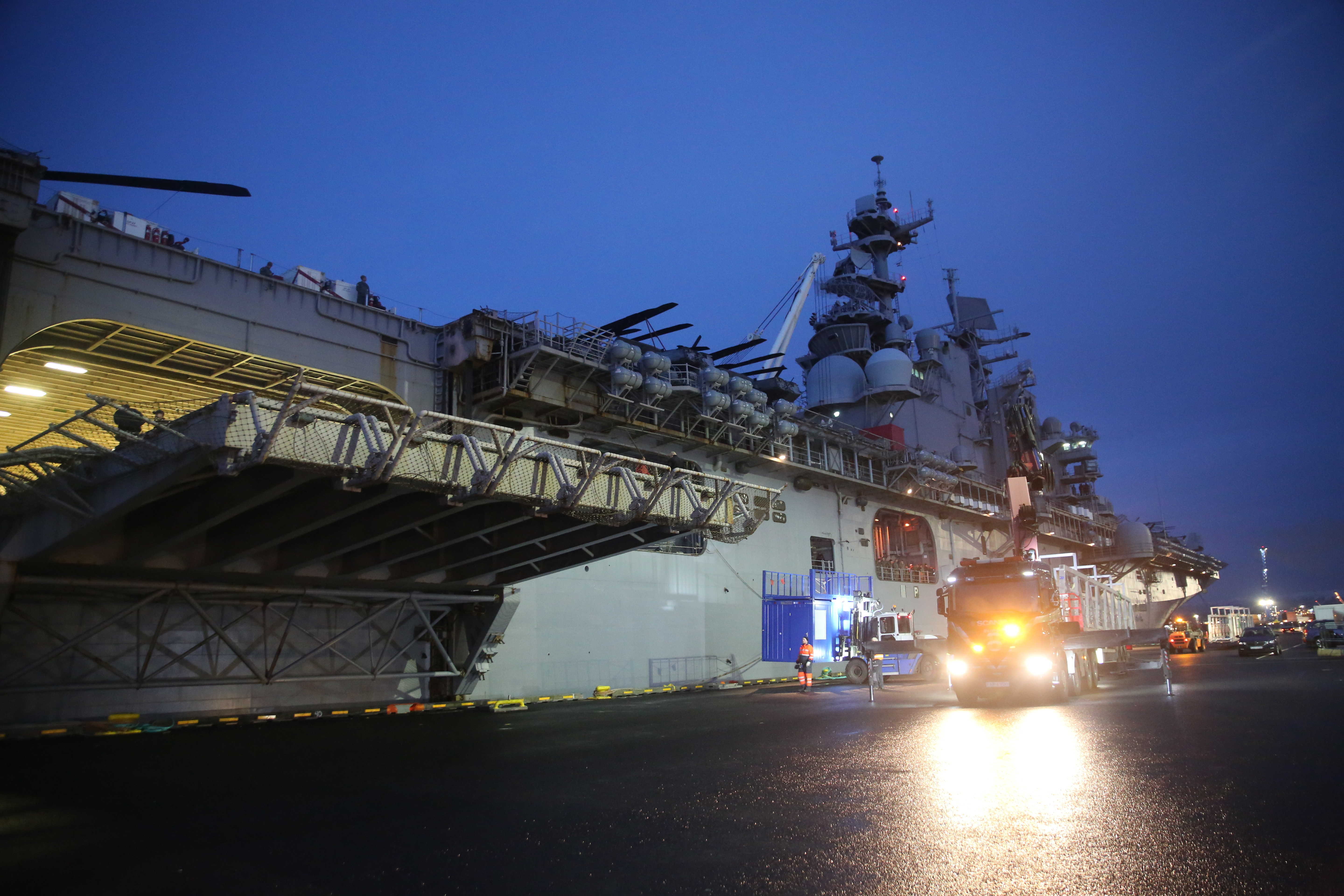
Amphibious assault ship USS Iwo Jima (LHD-7) had a small fire while undergoing maintenance at Naval Station Mayport, Fla.
“Sailors on board reported smoke in a cargo hold and a subsequent damage control investigation identified the fire and confirmed the fire had not spread to surrounding spaces,” Expeditionary Strike Group 2 said at the time.
Ship’s company, the Jacksonville Fire and Rescue Department and sailors from nearby guided-missile destroyer USS The Sullivans (DDG-68) fought the fire for about five hours in the middle of the night, from about 11:45 p.m. on Nov. 14 until about 4:45 a.m. the next day.
Eleven sailors suffered minor injuries during the firefighting effort; they were all treated at the scene and released.
Despite the fire, Iwo Jima wrapped up its maintenance availability – which began in December 2018 and was nearly done when the fire broke out – and left the pier for sea trials on Dec. 15.
May 2019 – USS Fitzgerald
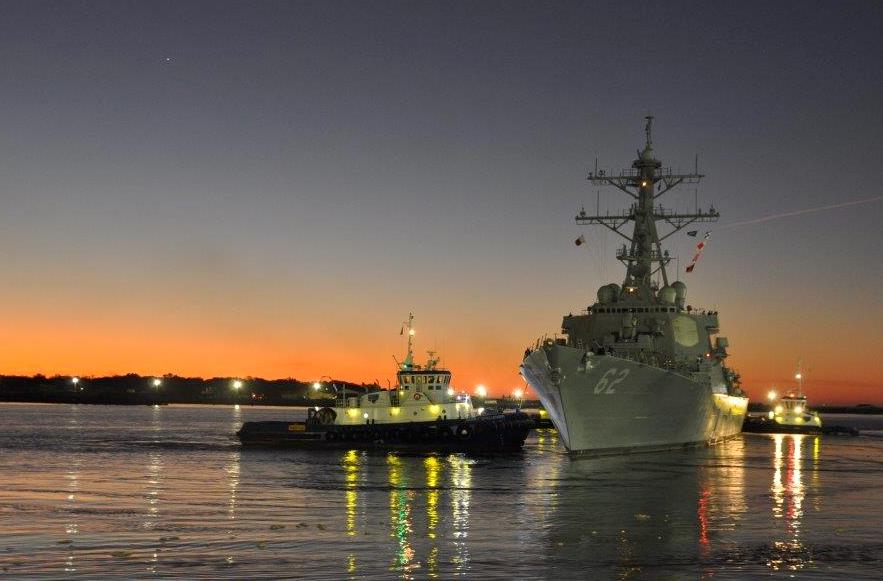
The commanding officer of guided-missile destroyer USS Fitzgerald (DDG-62), Cmdr. Garrett Miller, wrote a memo outlining unsafe maintenance conditions and practices that had led to several fire-related incidents over the past year. Fitzgerald was at the Ingalls Shipbuilding yard in Mississippi for repairs and upgrades after a fatal 2017 collision with a merchant ship.
“The lack of fire safety is a major concern on this project and I am extremely concerned we are on a path to have a catastrophic fire event on board. NSA (Naval Supervisory Authority) and KTR (contractor) leadership have taken measures to curtail, but they have been marginally effective. I have seen improvements in government [oversight] in the past few months, but little change in craft deck plate compliance. The most recent incident is uncomfortably similar to the recent USS Oscar Austin industrial fire,” Miller wrote in a May status report submitted to Navy officials and obtained by USNI News.
In February 2018, he wrote, there was a “smoldering deck due to work scope moved beyond fire watch area of responsibility without communicating to fire watch.” In December 2018, there was “burn-through from welding on transverse bulkhead with no fire watch present. Craft modified job without approval from supervisor violating conditions of hot work chit. S/F Fire Marshal discovered burn-through, stopped hot work and informed Ingalls Fire Marshal.” After multiple instances of jobs being shut down or even shipwide standdowns to review safety measures, Miller reported regular fires – and, worryingly, fires happening when no one was standing watch nearby. In May 2019 he wrote of “hot work in progress with fire watches stationed as indicated on chit, but trade expanded hot work into a space with no fire watch which caused damage to bulkhead lagging and electrical panel which will likely require replacement.”
Nov. 10, 2018 – USS Oscar Austin
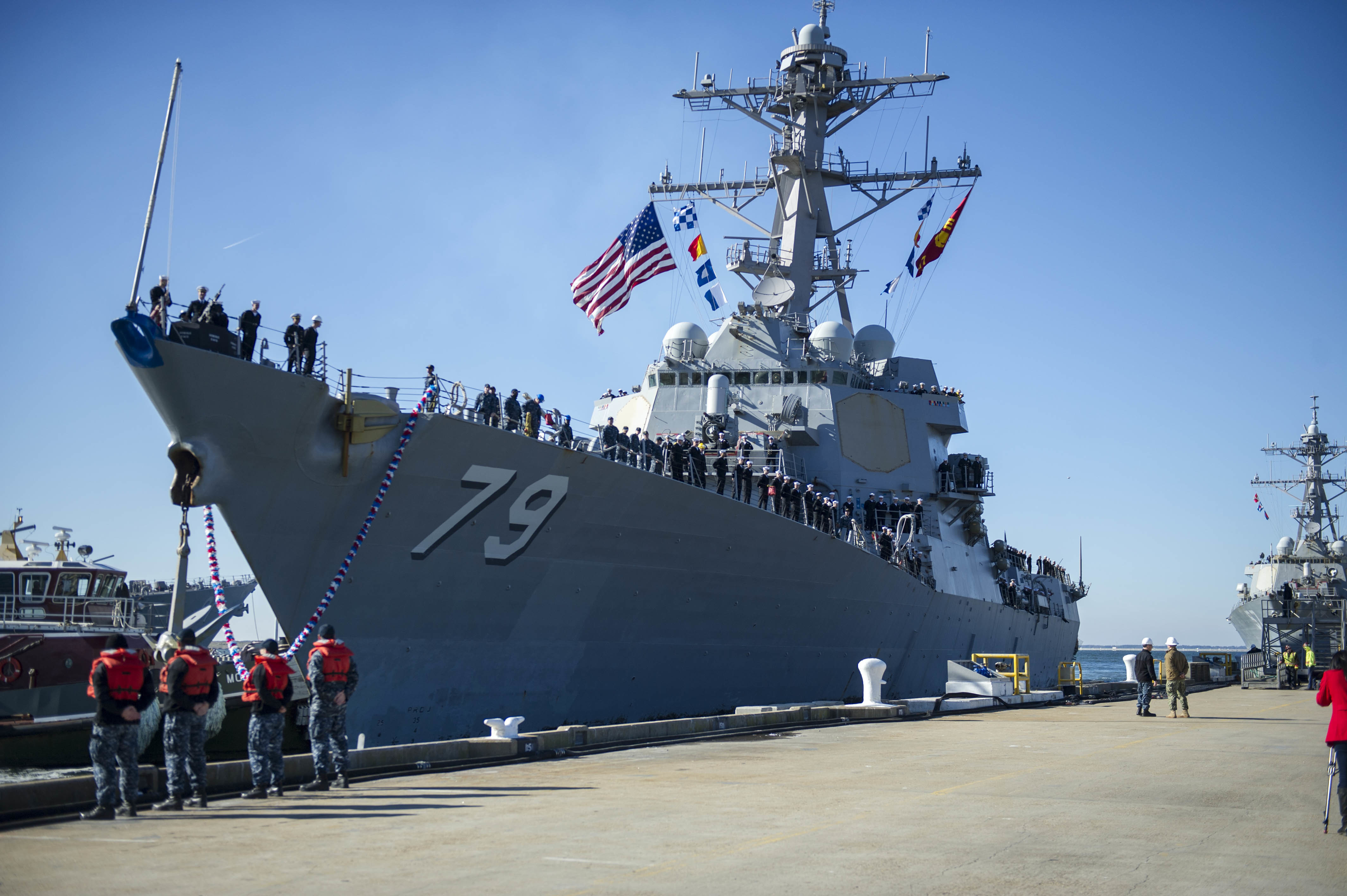
Destroyer USS Oscar Austin (DDG-79) was in a year-long upgrade at BAE Systems Norfolk Ship Repair yard in Virginia when an electrical fire broke out.
“They advised they had an electrical fire in a forward space and ships force damage control teams were engaged with fighting the fire. They also had a damage control element from the USS Cole on board assisting with their efforts, in total about 30 personnel,” according to the Norfolk Fire Marshal’s incident report. Local firefighters were only on the scene for about two hours, after which time Navy damage control teams had the situation under control and firefighters left the pier.
Though the fire didn’t rage for long, it certainly waylaid the destroyer. Oscar Austin will be in repairs until at least the first quarter of 2022, according to an unclassified Navy maintenance summary reviewed by USNI News. The summary included a request from the Navy’s Mid-Atlantic Regional Maintenance Center for more time to repair damage from both the fire and the firefighting effort.
“There was significant fire and smoke damage as well as water damage from the fire-fighting efforts. Thirty-two spaces sustained some manner of damage including several Aegis components,” NAVSEA spokeswoman Colleen O’Rourke told USNI News at the time. “Once the original work from the availability is complete, the ship will transit to Naval Station Norfolk to complete remaining restoration of affected equipment and spaces. Due to the complexity, availability and fabrication or refurbishment of the waveguides and cabinets, the restoration and testing schedule remains under review.”
Hot work by BAE employees was found to be the cause of the fire.
“Since the incident, the Navy worked with BAE to establish additional prevention and safety measures. Enhanced training was implemented for all BAE employees associated with hot work and fire watch. Permit Authorizing Individual training was also increased as were the number of hot work permit audits,” O’Rourke said. “Administratively, BAE implemented measures to ensure site turnover is conducted between shifts, work boundaries are clearly delineated and the BAE supervisors have properly communicated work scope.”
July 31, 2015 – USS Mount Whitney

USS Mount Whitney (LCC-20) suffered a 45-minute fire that began in a diesel generator space while the command ship was in a dry dock at the Viktor Lenac Shipyard in Rijeka, Croatia. No injuries were reported.
Damage from the fire was expected to lengthen the repair period by at least two months.
March 3, 2015 – USS Gunston Hall
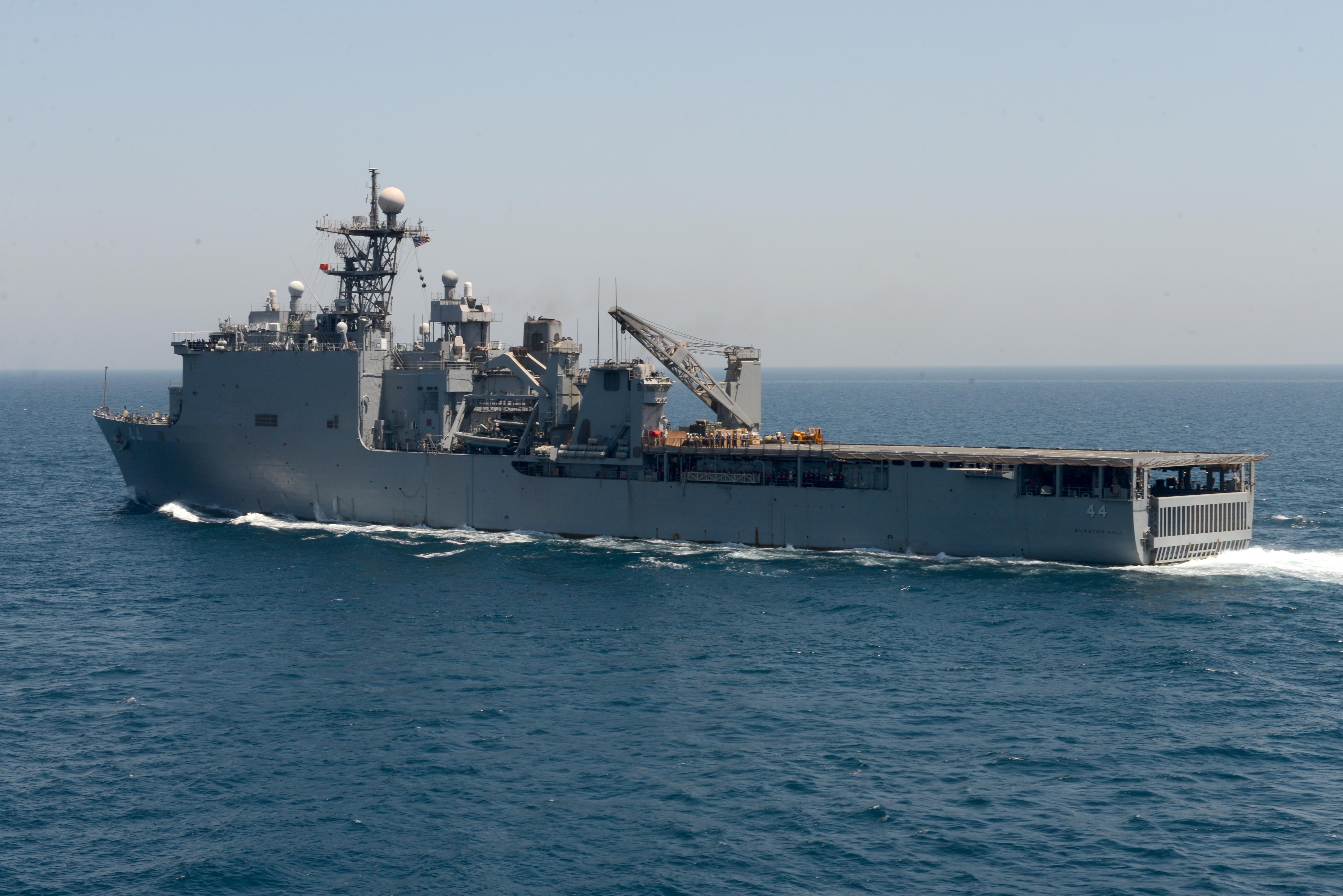
Amphibious dock landing ship USS Gunston Hall (LSD-44) suffered a three-hour fire aboard while the ship was undergoing maintenance at the NASSCO shipyard in Portsmouth, Va.
Initial reports indicated the fire began in an unmanned storeroom below the main deck, and the ship’s in-port emergency fire team responded right away, with the Portsmouth Fire Department quickly joining them. One sailor experienced a minor injury.
May 23, 2012 – USS Miami
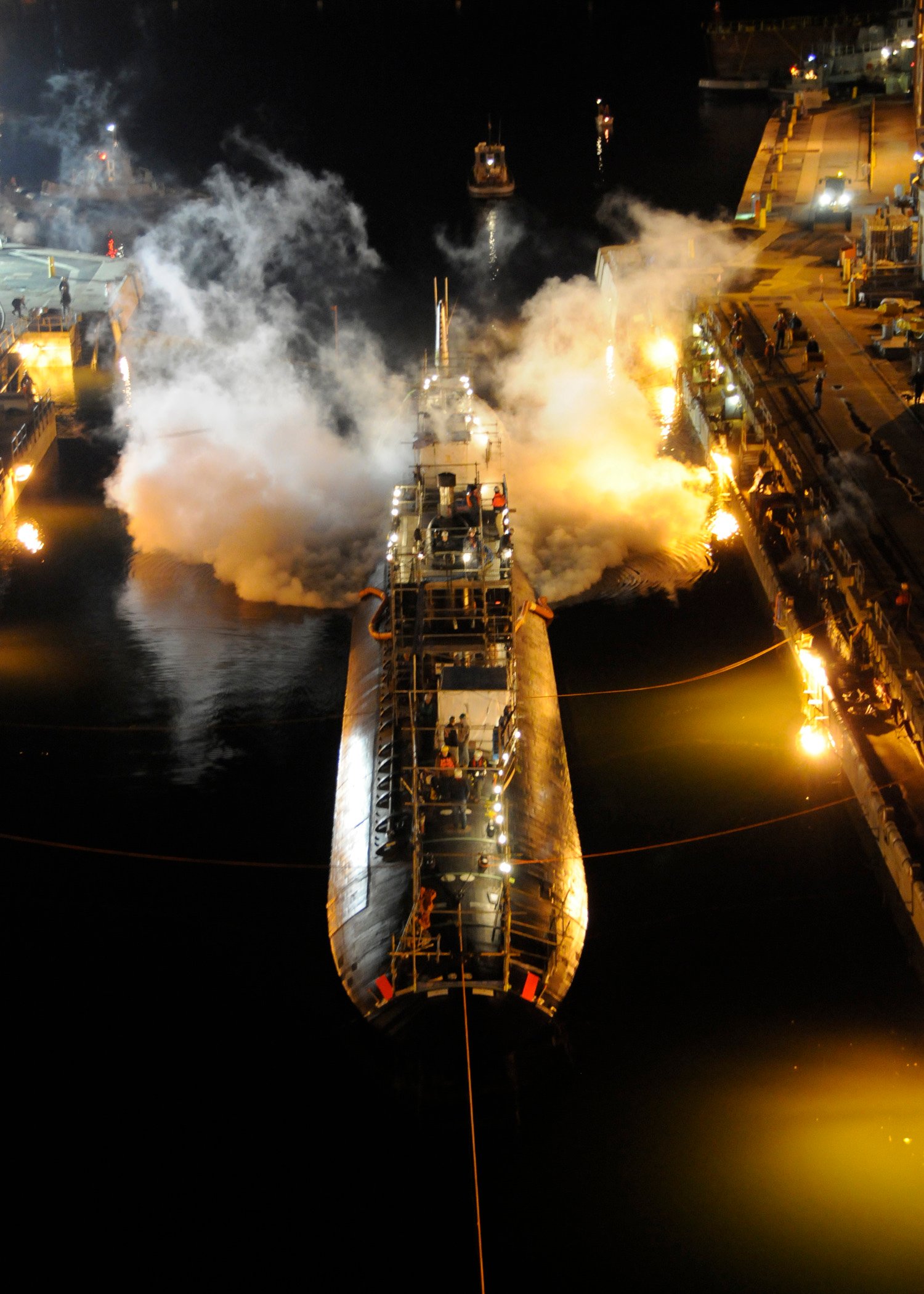
Attack submarine USS Miami (SSN-755) caught fire while undergoing repairs at the Portsmouth Naval Shipyard in Kittery, Maine, in an event later found to be arson. Casey James Fury plead guilty to starting the fire that caused more than $700 million in damages. Due to the bill to fix the boat – and the start of sequestration that cut the Navy’s budget and severely hindered its ability to absorb unexpected costs – the Navy chose to decommission the Los Angeles-class attack sub in 2014.
May 20, 2011 – USS Spruance

Destroyer USS Spruance (DDG-111) was damaged during post-delivery testing at General Dynamics Bath Iron Works in Maine when a routine gas turbine engine test led to a fire in the ship’s engine stack. Spruance had already undergone sea trials and was delivered to the Navy, and the shipyard was conducting post-delivery work on the new destroyer, according to the Portland Press Herald.





